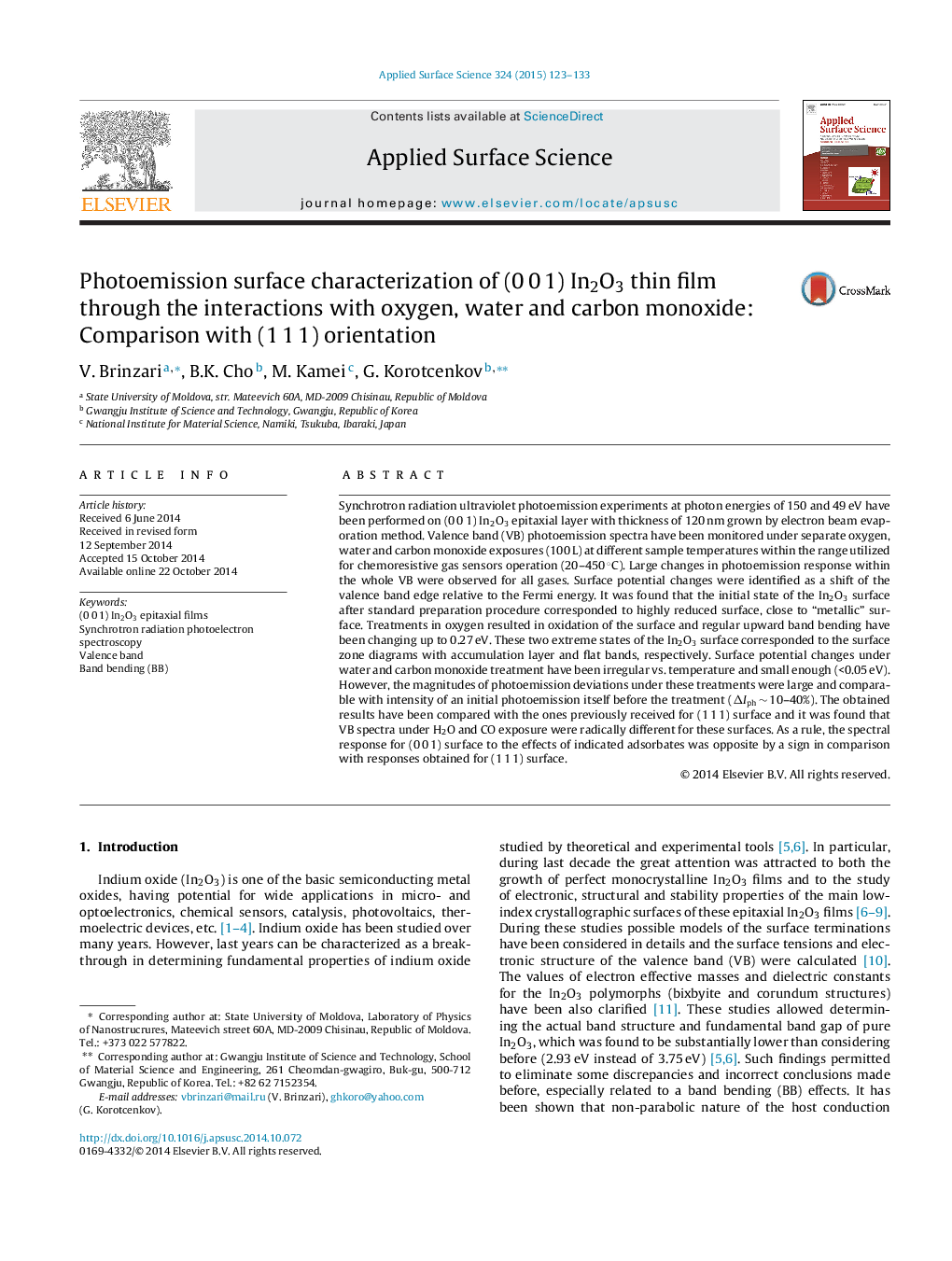| کد مقاله | کد نشریه | سال انتشار | مقاله انگلیسی | نسخه تمام متن |
|---|---|---|---|---|
| 5349008 | 1503640 | 2015 | 11 صفحه PDF | دانلود رایگان |
عنوان انگلیسی مقاله ISI
Photoemission surface characterization of (0Â 0Â 1) In2O3 thin film through the interactions with oxygen, water and carbon monoxide: Comparison with (1Â 1Â 1) orientation
دانلود مقاله + سفارش ترجمه
دانلود مقاله ISI انگلیسی
رایگان برای ایرانیان
کلمات کلیدی
موضوعات مرتبط
مهندسی و علوم پایه
شیمی
شیمی تئوریک و عملی
پیش نمایش صفحه اول مقاله

چکیده انگلیسی
Synchrotron radiation ultraviolet photoemission experiments at photon energies of 150 and 49 eV have been performed on (0 0 1) In2O3 epitaxial layer with thickness of 120 nm grown by electron beam evaporation method. Valence band (VB) photoemission spectra have been monitored under separate oxygen, water and carbon monoxide exposures (100 L) at different sample temperatures within the range utilized for chemoresistive gas sensors operation (20-450 °C). Large changes in photoemission response within the whole VB were observed for all gases. Surface potential changes were identified as a shift of the valence band edge relative to the Fermi energy. It was found that the initial state of the In2O3 surface after standard preparation procedure corresponded to highly reduced surface, close to “metallic” surface. Treatments in oxygen resulted in oxidation of the surface and regular upward band bending have been changing up to 0.27 eV. These two extreme states of the In2O3 surface corresponded to the surface zone diagrams with accumulation layer and flat bands, respectively. Surface potential changes under water and carbon monoxide treatment have been irregular vs. temperature and small enough (<0.05 eV). However, the magnitudes of photoemission deviations under these treatments were large and comparable with intensity of an initial photoemission itself before the treatment (ÎIph â¼Â 10-40%). The obtained results have been compared with the ones previously received for (1 1 1) surface and it was found that VB spectra under H2O and CO exposure were radically different for these surfaces. As a rule, the spectral response for (0 0 1) surface to the effects of indicated adsorbates was opposite by a sign in comparison with responses obtained for (1 1 1) surface.
ناشر
Database: Elsevier - ScienceDirect (ساینس دایرکت)
Journal: Applied Surface Science - Volume 324, 1 January 2015, Pages 123-133
Journal: Applied Surface Science - Volume 324, 1 January 2015, Pages 123-133
نویسندگان
V. Brinzari, B.K. Cho, M. Kamei, G. Korotcenkov,